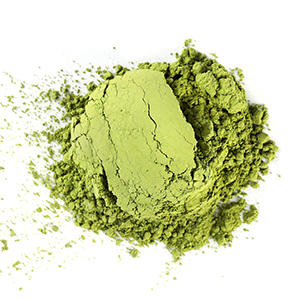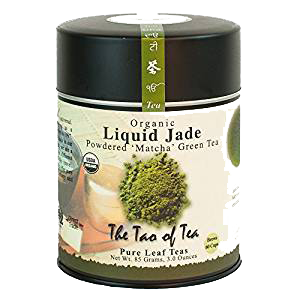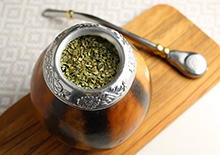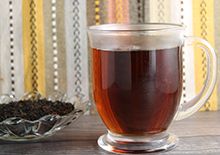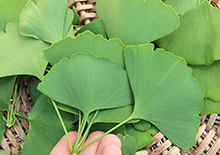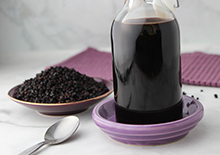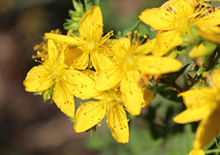- Home
- List of Herbs
- Matcha Green Tea Powder
Matcha Green Tea Powder, Top Benefits of a Japanese Tradition
Intro | What is Matcha? | What Does Matcha Taste Like? | Ceremonial Grade Vs Culinary | Health Benefits | How to Use | Matcha Preparation | Precautions | Shop
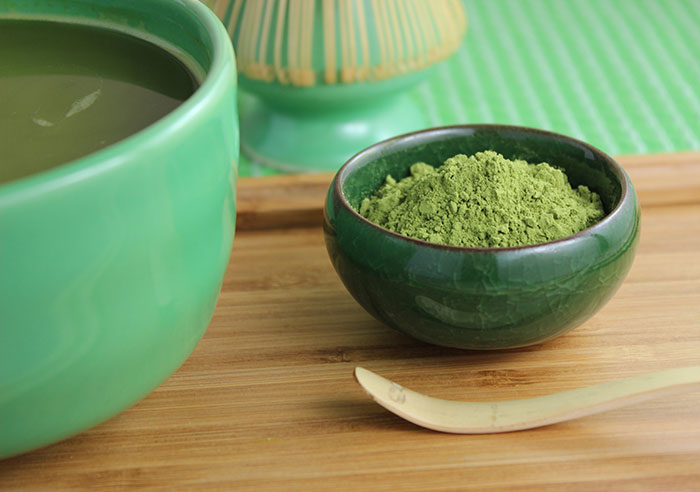
Matcha is a type of powdered green tea that comes from the same plant that produces all black, green and white tea: the Camellia sinensis species.
While there are many ornamental flowering varieties in the genus Camellia, this particular species is known to have the highest alkaloid content and used most exclusively for tea production.
The traditional preparation of matcha green tea powder is a spiritual activity with deep seated roots in Japanese Zen Buddhism and "Chanoyu", the Japanese Tea Ceremony. This is a meditative and highly focused ritual of preparing, serving and consuming matcha tea that has evolved as a form of ceremonial practice since the 12th century.
Table of Contents
Intro | What is Matcha? | What Does Matcha Taste Like? | Ceremonial Grade Vs Culinary | Health Benefits | How to Use | Matcha Preparation | Precautions | Shop
Known for its rich, smooth and full-bodied green-leafy flavor, the basic steps for making matcha involve vigorously whisking the powder into hot water until a frothy to dense foam is created.
The three customary tools for making matcha include a bamboo whisk (or chasen), a scoop (or chashaku) and a ceramic matcha bowl (or chawan).
Different than green tea infusions, when you drink a cup of matcha tea you're consuming the whole leaf and all its beneficial properties. It is considered one of the healthiest of the green tea varieties for this reason.
The powder is commonly used as a flavor enhancer in many Japanese foods and likewise has become very popular as an ingredient in recent times in numerous Western-style dessert and drink recipes. These days there are hundreds of brands online offering matcha green tea powder and their marketing is not just for tea consumption.

What is Matcha?
The green Camellia sinensis leaves used to produce matcha are different than other types of tea in that they are shade-grown for about 3-4 weeks before they are harvested. This slows down their growth and helps to increase the chlorophyll content, producing a darker deeper green color. This technique also imparts a higher concentration of other nutrients compared to most tea plants grown in direct sunlight.
The unrolled dried leaves produced from this shade-growing process are called tencha (碾茶). When tencha leaves are powdered, they are called matcha (抹茶).
After the leaves are harvested, they are briefly steam-prepared, dried and usually the veins and stems are removed. High quality talc-like matcha powder is made via a slow stone grinding process which produces a very fine powder. The term "matcha" in fact means "finely powdered tea." Powdered leaves are known for their bright jade to lime-green color.
The powder created offers a smooth texture when whisked into hot water that is ideally a temperature around 176°F (80°C). In Japanese tradition it is prepared as a thick koicha (濃茶) tea or a thin usucha (薄茶) tea, using more or less powder per ratio of water.
Most all commercial tencha green tea is produced in the Kyoto Prefecture of Japan, famous for its quality shade-grown tea cultivation and specific cultivars used to make matcha green tea powder.
What Does Matcha Taste Like?
The unique flavor of matcha green tea powder is in part due to its higher amino acid content which generally creates a mildly sweet and pleasant bitter green leafy flavor with a slight astringency. If you enjoy the flavor of green tea, you will mostly likely find a cup of matcha very appealing to the taste buds.
Keep in mind, not all matcha is created equal. Taste qualities can be largely affected by many variables such as specialized cultivar utilized, season of harvest as well as unique artisanal Japanese growing methods. All of these influences can alter subtle flavors, reduce bitterness and improve texture when infused.
While there are no standard requirements for matcha green tea powder quality, evaluation is often based on several factors which predominantly include taste, aroma, color and texture.
Ceremonial Grade Vs Culinary
There are essentially two types most widely marketed:
1) Ceremonial Grade
- This is considered the highest quality matcha and, as the name
implies, is the one traditionally used in Japanese tea ceremonies. The
leaves are sourced from the young top part of the plant rather than the
bottom. After dried, the leaves are very finely stone ground over a
number of hours which ultimately creates a smoother tea. It is described
to have a milder taste and increased "umami" flavor characteristics.
This type is often much more expensive than lower grades.
2) Culinary Grade
- This matcha powder is frequently used for less ritualistic purposes as a
tea or as a "culinary" ingredient addition in dessert or drink recipes.
The leaves are sourced from the older lower part of the plant. It is
distinguished for its slightly stronger green flavor and can be coarser
in particle size. If matcha powder doesn't specify grade, it is usually a
culinary variety.
Because there has been a concern about the high levels of lead and other heavy metals in green tea sourced from low quality commercially grown tea plants, we always recommend Certified Organic matcha green tea powder to avoid these potential contaminants.
Benefits of Matcha Green Tea Powder
1) Contains Antioxidants, Like Catechins
2) Matcha Tea, Its Caffeine Content and Comparison to Coffee
3) Calming L-theanine Content May Influence Mood and Concentration
4) Other Nutritional Components of Matcha
1) Contains Antioxidants, Like Catechins
As we mentioned previously, one thing about consuming matcha tea compared to other green teas is that you're drinking the whole leaf and therefore ingesting health-enhancing nutrients simultaneously. In addition, the overall beneficial properties in tencha tea leaves increase significantly because of the way it is shade-grown.
One of these such compounds common to the Camellia sinensis species are the polyphenols known as catechins. While they are also found in other foods like cacao and berries, green tea is known to be one of the highest sources of these natural plant-based antioxidants.
The four major catechins found in green tea, and especially the tencha leaf matcha variety, are: epigallocatechin, epicatechin, epigallocatechin gallate and epicatechin gallate.
The most studied abundant and active catechin is epigallocatechin gallate, also called epigallocatechin-3-gallate or EGCG and can constitute up to 60% of the green tea leaf.
In a 2017 review, the EGCG's in green tea extracts were acknowledged for their potential protective effects on number of different health influences. In comparison to regular green tea, one study identified that the concentration of EGCG in matcha tea is at least three times higher than most green teas and even up to 137 times greater than some China Green Tips tested.
In general, catechins have been researched helpful for inflammatory issues such as inflammatory bowel disease (*) and EGCG is also known to have a beneficial influence on vascular and metabolic actions. (*) Likewise, the catechins present in green tea are recognized for their antimicrobial properties and suggested useful for conditions such as periodontal disease. (Source)
Matcha is commonly marketed as a useful adjunct to the diet for those looking to lose excess body weight. This is not only due to the caffeine content but also because catechins are additionally known to help boost metabolism which can help to burn body fat.
Studies on matcha green tea powder show that catechins are relatively heat stable but can be reduced by 20% when heated to 356°F (180°C). However, this is a temperature that is much higher than that used when preparing a traditional cup of matcha.
2) Matcha's Caffeine Content, Comparison to Green Tea and Coffee
Matcha contains the purine alkaloid known as caffeine, along with small quantities of theobromine and theophylline. The amount of caffeine in matcha tea is higher than the same portion of steeped green tea leaves, sometimes up to three times greater.
A one teaspoon or 2 g serving size of matcha green tea powder whisked into 8 fluid ounces of hot water is known to contain approximately 70 mg of caffeine. This amount can of course vary on quality and type of matcha consumed. Brewed green tea is usually between 25-50 mg of caffeine, depending on variety.
If you're sensitive to caffeine, a 1/4-1/2 teaspoon serving might be more appropriate. This would equate to about 17-35 mg of caffeine. Other options may also include non-caffeinated teas that act more naturally as herbal stimulants.
The average cup of coffee is about 95 mg caffeine per 8 fluid ounces. Typically, the average cup of matcha is a little over two-thirds the amount of coffee and is often considered moderate by comparison.
One of the frequently claimed benefits of matcha is that it provides caffeine without the nervous jittery side-effects of coffee. While this might have something to do with the fact that your consuming the fibrous whole leaf with your tea (in-effect slowing its absorption rate), other evidence suggests another component is involved.
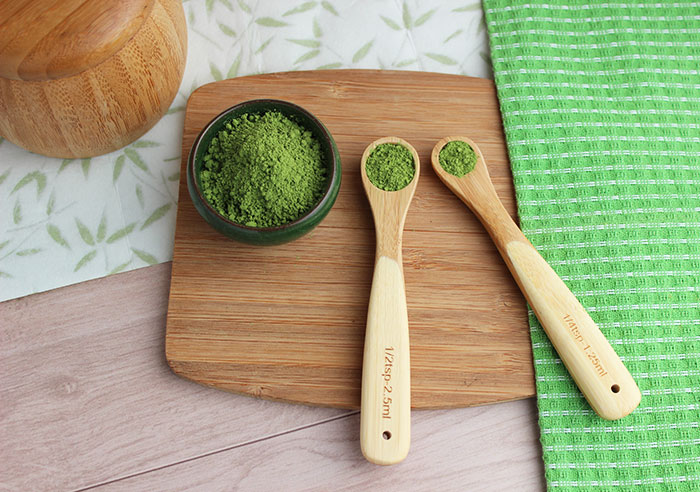
3) Matcha's L-theanine Content Helps to Balance Caffeine
Matcha green tea powder is popular for its ability to encourage a calm yet alert state, inhibiting some of the agitating side-effects associated with other caffeinated substances such as coffee. This is due to one of the powders major amino acid constituents called theanine or L-theanine.
L-Theanine is found primarily in the bay bolete edible mushroom species and Camellia sinensis plant. This compound is the most abundant non-protein amino acid in the leaves, along with small amounts of arginine and glutamic acid. These substances are what gives matcha its increased umami-like flavor.
Shade growing tencha leaves concentrates the L-theanine content and thus matcha can contain up to five times the amount as regular green tea.
L-theanine has been shown to "facilitate the generation of alpha waves in the brain", promoting a relaxed state without causing drowsiness. (*) Some individuals report that it helps to promote heightened concentration and similarly in some research the L-theanine and caffeine combination in green tea was found to have a relaxing impact with a beneficial outcome on "sustained attention, memory and suppression of distraction." (*)
Theanine is able to cross the blood-brain barrier and is believed to support the increase of dopamine, serotonin and GABA levels in the brain and is found to have a potential anti-stress benefit. (Source)
It is known to be utilized historically as a type of Shen tonic by Zen Buddhists to aid in meditation practice as it encourages a peaceful state of mind. In "The Book of Tea", Japanese 19th century scholar Kakuzo Okakura also describes its use by Buddhist monks to "prevent drowsiness during their long hours of meditation", while Taoists he writes “claimed it as an important ingredient in the elixir of immortality."
The L-Theanine derived from green tea, with its researched anti-stress response, was shown to have probable benefits for patients with major depression. (*)
In 2018 research conducted at the School of Pharmaceutical Sciences at the University of Shizuoka Japan, analyzing the stress-reducing effect of matcha on humans as well as mice, matcha intake of 3 grams in 500ml hot water had a stress-reducing influence on students tested. Likewise, mice given 33 mg/kg of matcha showed significant suppression of adrenal enlargement, a critical stress-response organ.
4) Other Nutritional Components of Matcha
Matcha is naturally high in chlorophyll, but this component is diminished when consumed as a tea. For chlorophyll uptake, matcha powder can be consumed in drinks and foods.
Chlorophyll intake can encourage cleansing actions and offers nutritional constituents. However, other cleansing herbs and nutritive herbal teas might be more appropriate for such purposes.
In addition to chlorophyll, matcha green tea powder also contains some vitamin and mineral content, like vitamin A and iron as well as small amounts of vitamin C. Again, for highest nutritional uptake, it is best to use the powder in its unheated state.

How to Use
While matcha green tea powder is used to make matcha tea, it can also be utilized in desserts and drink recipes. In Japan, it is often traditionally used to flavor foods like mochi, green tea ice cream and soba noodles.
It is best to store matcha in a sealed airtight container or tea caddy so that it retains its freshness for longer periods of time.
Standard serving size per 8oz cup of matcha tea is about 1/2-1 teaspoon.
Simple Method of Matcha Preparation
- Place 1/2 to 1 teaspoon into a ceramic matcha bowl. (A matcha scoop (or chashaku) measures approximately one gram or 1/4 teaspoon.)
- Pour a small amount of hot water over the powder. Water should be under a boiling temp around 176°F (80°C). Or, let boiled water cool down about 10 minutes.
- Using a bamboo matcha whisk, briefly stir the powder into the hot liquid.
- Then whisk from side to side vigorously for about 30 seconds or until a dense foam is created without too many air bubbles on the surface.
- Whisk in a zig-zag motion to incorporate.
- Add more hot water if desired for a total of 6-8 ounces of tea.
- Add sweetener or nut milk if desired.
Note: If you having trouble creating the foam you may want to use less water per ratio of powder.
Precautions:
Consuming an excess amount of matcha green tea powder, because of the caffeine content, may trigger unwanted side-effects such as insomnia or headaches. It's best to avoid consuming matcha if you are pregnant or nursing. Seek the advice of your nutritionist or healthcare provider before drinking matcha if you have a serious medical condition or are taking prescribed medications.
Shop Related Products (About Affiliates & Amazon Associate Paid Links)
Affiliate Disclaimer: This section contains affiliate product links. If you make a purchase through our recommended links, we receive a small commission at no additional cost to you. Thanks for the support.
